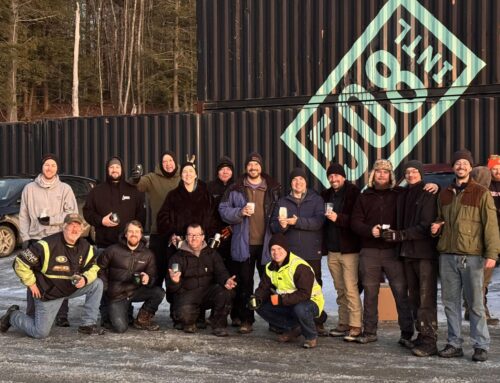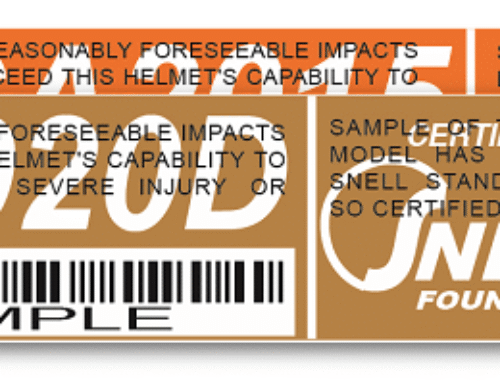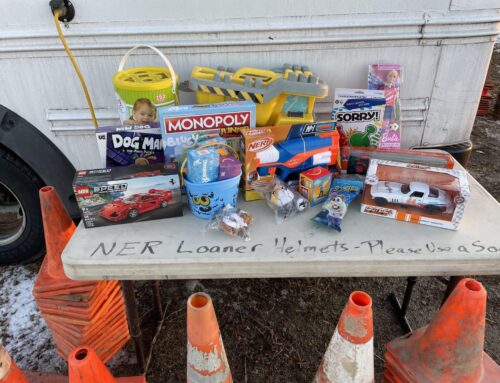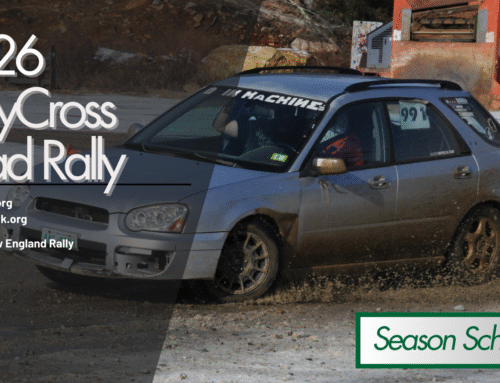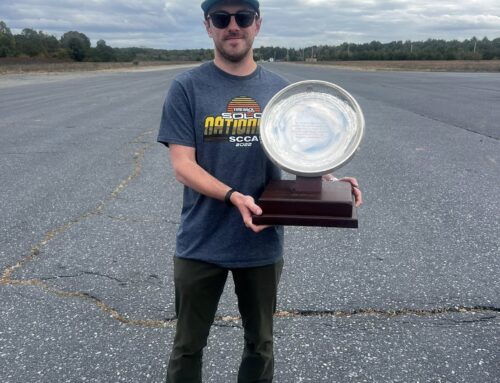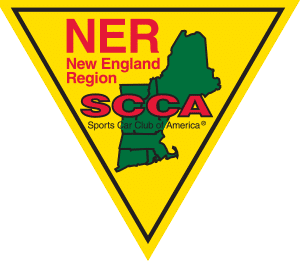Written by: Dave Rodman
My, what a difference a few decades can make — obviously in any aspect of life — but particularly in my experience, when it comes to “flagging and communications” or “F&C” as it’s known in race track shorthand.
But the first thing you ought to understand — and the coolest aspect of the game, particularly if you’re reading this site — is that the SCCA is the portal to an arena that the imagination hardly does justice to. Whether you’re an SCCA member or not, checking event schedules should be easily accomplished. Whether you’re interested in Club racing, performance or TSD rallying, autocross or rallycross there’s an event you can attend. Finding a contact person should be as easy as finding an event. Heck, if you’re stuck contact me and I’ll get you pointed in the right direction.
For me, being an SCCA flagger was my invitation to work events in F1, IndyCar, IMSA and NASCAR. SCCA itself opened the door to professional Formula Atlantic, Trans-Am and Can-Am. Even this week, in the aftermath of an SCCA Majors event at my home track in Thompson, Conn., came an invitation to flag a Formula E Grand Prix in New York City.
New York City!
With two nights in a hotel, plenty of cameraderie and cold beverages, with a little free food thrown in, I ask — as a race fan does it get any better?
But back to that history lesson.
At the root of F&C, very little has changed, dynamically, in the physical way in which racing events are “marshaled” — another term for flagging. Flaggers are the conduit through which competing drivers are given information about the course on which they are competing and also about the vehicles they are driving. Flaggers are the information source for the officials that are administering events, giving them accurate, concise reports on what is happening on-course as well as the condition and conduct of both the course and competing vehicles. So flagging is what it has been… But what has radically changed, in recent years particularly, is the philosophy under which F&C is practiced.
Safety has always been Priority One for flaggers. That will never change and never can in what, after all, is an inherently dangerous activity. I wouldn’t trade the era in which I started flagging and spent the first two decades of my F&C career — either for the individuals I worked alongside or the experiences we had. I’ll never forget being in the middle of the esses at Lime Rock with Can-Am cars going by me and my partner on either side of the broken car in the middle of the road. I never felt threatened, at risk or in danger , we were just doing what we were trained to do at the time in which “getting it done,” whether it was removing stranded cars, extricating trapped drivers or extinguishing fires was the norm.
For better or worse, and without going into much unnecessary detail, in these litigious modern times “black flag all” and “full course yellow” have become the norm and responding to virtually anything is frowned upon. More’s the pity and I’m just thankful I got to feel a DSR driver’s hands grabbing my legs as I levered her overturned car up on its roll bar so she could crawl out from beneath it. And that I was able to jog or sprint to numerous cars while arming a fire bottle and knocking down varying degrees of flames.
Of course, there’s also the ridiculous.
Like the drivers’ school at Daytona where a Formula Ford newbie turned-in so ridiculously early and subsequently got back on the throttle so hard that when he inevitably went off-course at a 45-degree angle in the middle of the East Horseshoe exit and then hit the guardrail flush with both left-side wheels. His helmet snapped out of the cockpit on impact and me, 20 feet away on outpost with my mouth open, thought I was gonna take 7 steps to a severed head viewing and thankfully only found a very confused driver sitting inside his helmet-less balaclava wondering “what in the world did I just do?”
Priceless.
And what’s also priceless — both for me as a flagging veteran, as well as for anyone that wants to make the commitment to learn the ins and outs of the craft — is the drastically altered landscape in which flaggers are employed. Just the fact that flagging can be considered any level of “employment” is a relativity new phenomenon and let me tell you, as a long-term practitioner of the art, that is really, REALLY great news.
Of course, some semblance of retirement is a good start, but for me, since I came back to SCCA flagging in 2016, I’ve managed to network my way into flagging for five different entities. To me, my SCCA background is the anchor for it all because in my opinion the training I received in New England Region so many years ago was second to nothing I’ve experienced since. In 2017 I worked for seven SCCA regions, from Savannah to New Hampshire and out to Pittsburgh. Every one of them wined and dined me, two of them paid me a per-day cash allowance, NER has a merchandise/gas credit program and NCR has the coolest, most trouble-free “expense reimbursement” program I’ve ever seen.
You can’t lose at that rate — especially since you can create choices.
I applied to and am currently a track flagger at Thompson, Summit Point and VIR. And I networked into a Northern Virginia contract flagging group that does car club events at Summit for $120 a day. And all of it is based off my schedule and availability. To me, as a lifelong race nut who thrives on being involved, right now I can’t imagine it being much better.
To anyone who thinks they might like a taste I’d suggest reaching out to one of us and planning on hitting New Hampshire in August, Palmer in September or Thompson in October or contact your local race track and consider doing an application for 2019.


